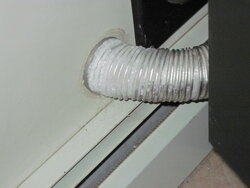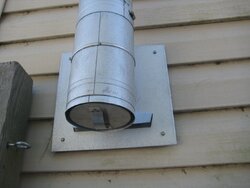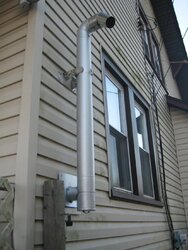Controversial subject, I'm told.
Anyways, I just wanted to share my OAK experience since installing it on my Eco-65.
The one comment I heard a lot (including from a Drolet technician) is that the colder the air outside, the more BTUs my stove will produce. I can't really say that I am seeing that result so far. If anything, the colder it is outside the stove seems to run slightly less hot - at least by what my exhaust temp is reading on the stove. On milder nights it seems to be about the same temperature as it was before - maybe a degree or two hotter.
The big impact however has been with drafts. Since installing the OAK, the drafts in my home have almost entirely disappeared. The stove is in the basement and upstairs are all old single pane windows that I have covered in plastic for the winter. Drafts were so bad before that at night you could actually see the plastic crinkle and move with the drafts coming in. Now they are still as can be.
So while I'm not sold on the the claims of "colder air = more btus", installing the OAK was well worth it for the draft situation.
One question though: I'm noticing ice build-up around the housing for the air intake on the stove. Is this normal?
Thanks.
Anyways, I just wanted to share my OAK experience since installing it on my Eco-65.
The one comment I heard a lot (including from a Drolet technician) is that the colder the air outside, the more BTUs my stove will produce. I can't really say that I am seeing that result so far. If anything, the colder it is outside the stove seems to run slightly less hot - at least by what my exhaust temp is reading on the stove. On milder nights it seems to be about the same temperature as it was before - maybe a degree or two hotter.
The big impact however has been with drafts. Since installing the OAK, the drafts in my home have almost entirely disappeared. The stove is in the basement and upstairs are all old single pane windows that I have covered in plastic for the winter. Drafts were so bad before that at night you could actually see the plastic crinkle and move with the drafts coming in. Now they are still as can be.
So while I'm not sold on the the claims of "colder air = more btus", installing the OAK was well worth it for the draft situation.
One question though: I'm noticing ice build-up around the housing for the air intake on the stove. Is this normal?
Thanks.






